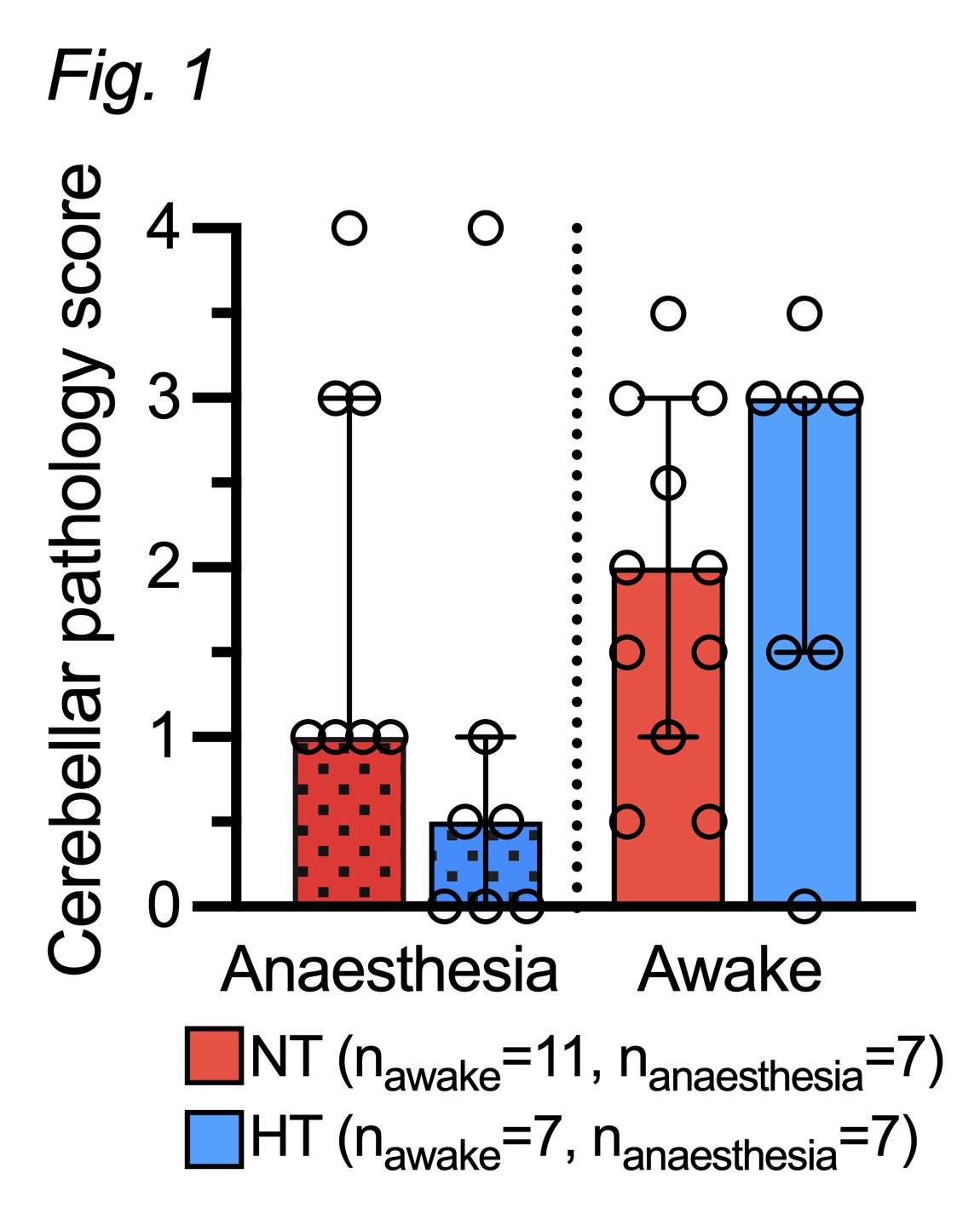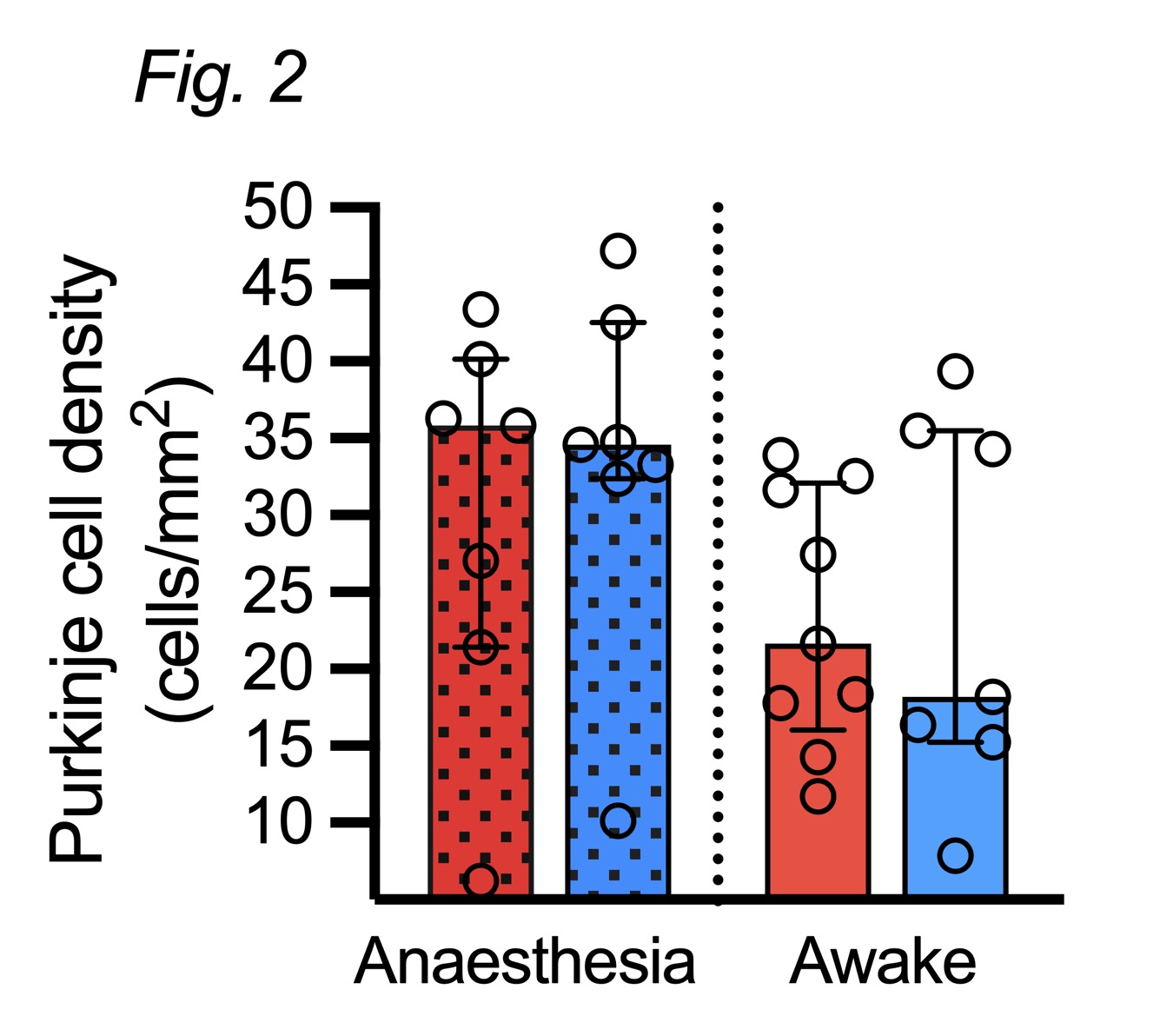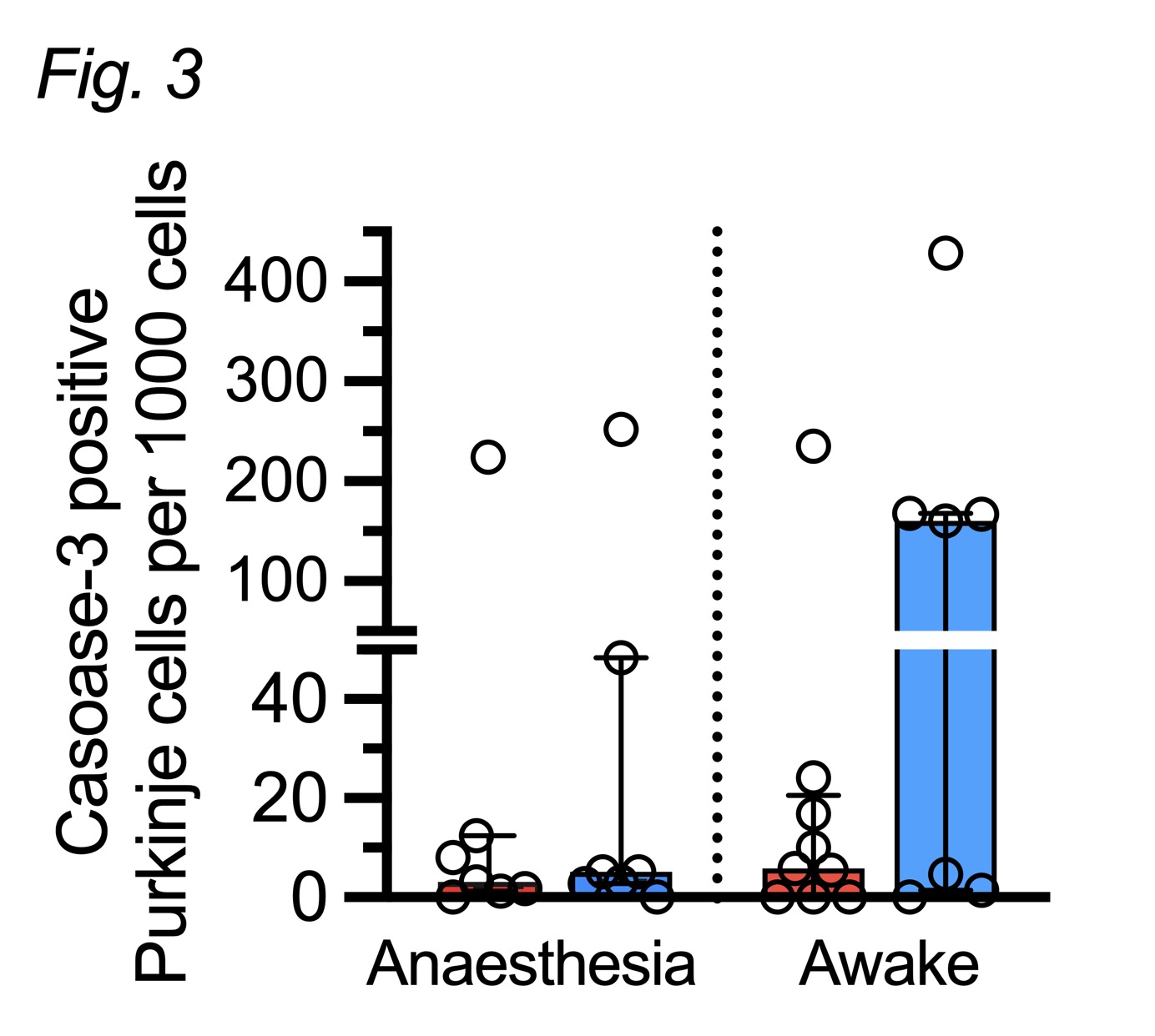Neonatal Neurology: Pre-Clinical Research
Neonatal Neurology 7: Preclinical 1
12 - Anaesthesia during therapeutic hypothermia protects against apoptosis in the pig cerebellum
Publication Number: 12.433

Julia K. Gundersen (she/her/hers)
Medical student / PhD
University of Oslo
University of Oslo
Oslo, Oslo, Norway
Presenting Author(s)
Background:
Hypothermia (HT) is neuroprotective following neonatal hypoxic-ischemic (HI) brain injury. However, systemic cooling to HT temperature is a potential stressor, coinciding with a surge in circulating cortisol and subsequent diminished neuroprotection in unsedated pigs1. The effect of stress on the severity of HI injury and HT neuroprotection in the cerebellum is underreported in experimental studies, despite being a susceptible region in humans.
Objective:
We have examined cerebellar injury in two historical experiments in which newborn pigs were either anaesthetised2 or remained unanaesthetised and awake1 during normothermia (NT) or HT.
Design/Methods:
In both studies, newborn pigs were halothane-anaesthetised and induced 45 min global HI by reduced FiO2 and graded hypotension until low-amplitude electroencephalogram. On reoxygenation, 24h of randomised NT or whole-body HT commenced, during which the first study (n=18) stopped anaesthesia, extubated and awoken the pigs, whereas the second study (n=14) changed anaesthesia from halothane to remifentanil-propofol. Cerebellar injury was assessed after 48h of survival by classical histopathology, purkinje cell counts (calbindin-labelled) and apoptotic purkinje cell counts (cleaved-caspase-3-labelled). Wilcoxon Mann-Whitney and Kendall´s tau-b correlation statistical tests were applied. Figure data is represented as medians and interquartile ranges.
Results:
HT was neuroprotective compared to NT in the anaesthetised pigs (fig. 1, p=0.029) but not the awake pigs (p=0.55). Purkinje cell density correlated with the pathology score (tau-b -0.57, p< 0.001), and was greater in the anaesthetised pigs than awake pigs irrespective of treatment (fig. 2, p=0.034). The number of cleaved-caspase-3 positive purkinje cells also correlated with the pathology score (tau-b 0.50, p< 0.001), and was greatly increased among HT awake pigs as compared to the other groups (fig. 3).
Conclusion(s):
Anaesthesia during post-insult HT provided cerebellar neuroprotection after global HI injury in newborn pigs. However, in pigs remaining unanaesthetised and awake during cooling the injury was exacerbated, purkinje cell density reduced and apoptosis increased. Our results support and expand the consensus that adequate sedation/anaesthesia is needed during HT to achieve optimal neuroprotection1.
1. Thoresen M et al. Pediatr Res. 2001/08/24 ed. 2001 Sep;50(3):405–11.
2. Chakkarapani E et al. Ann Neurol. 2010 Sep;68(3):330–41. 


